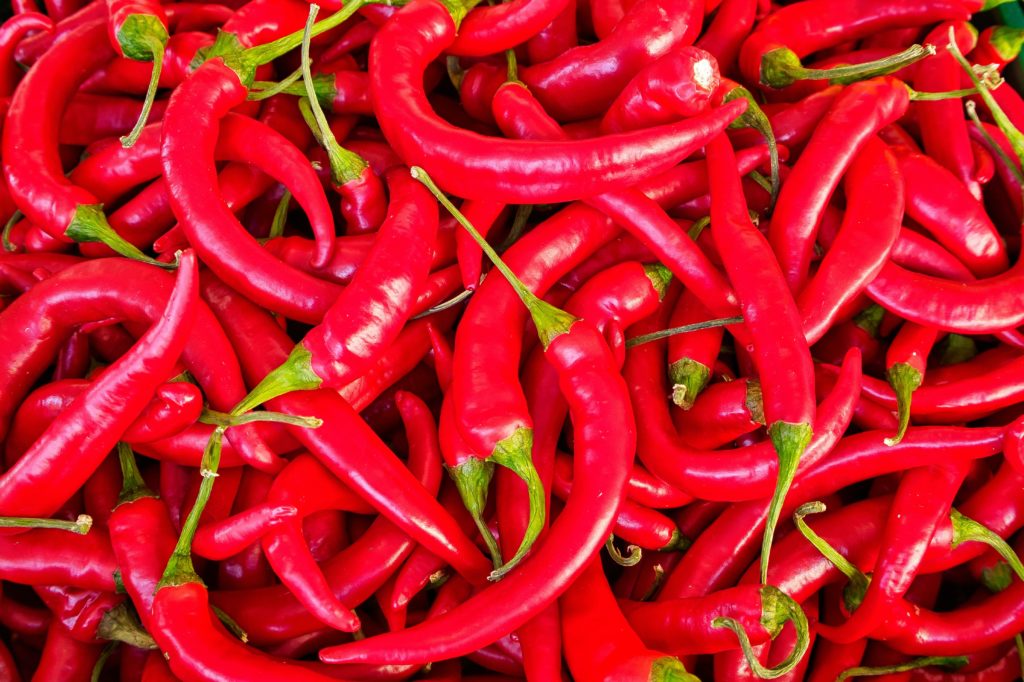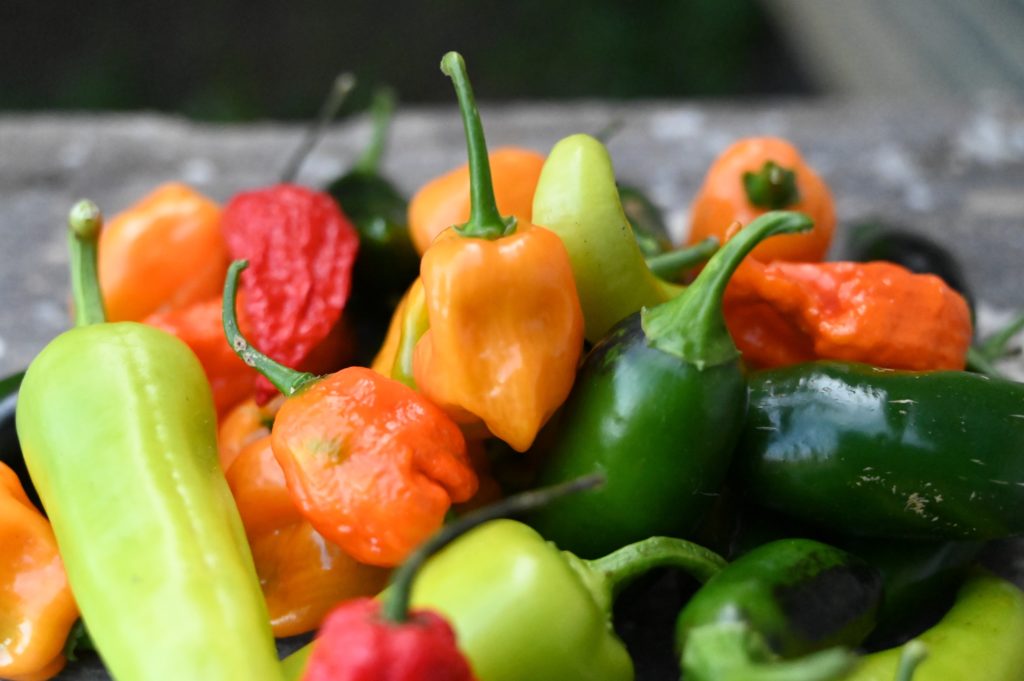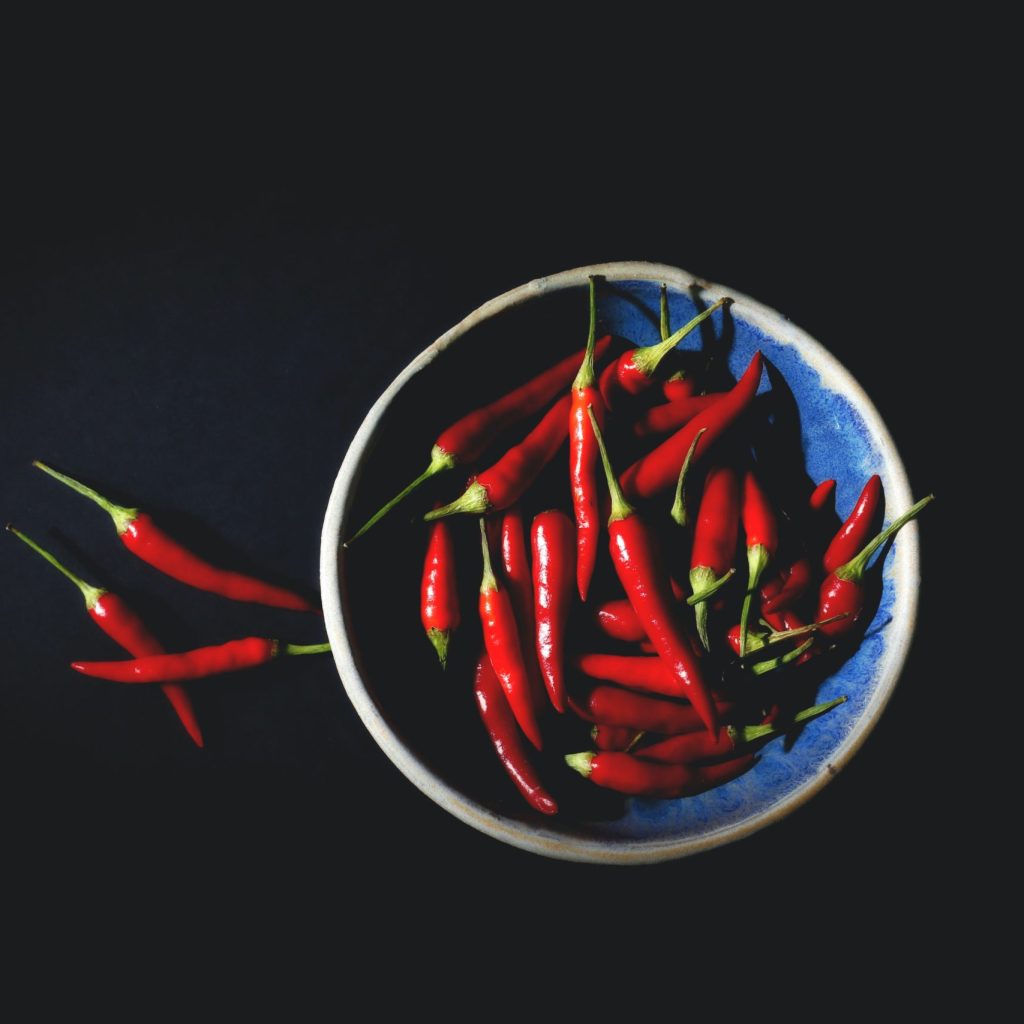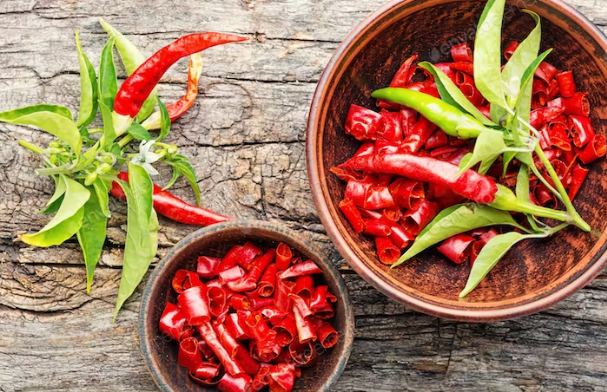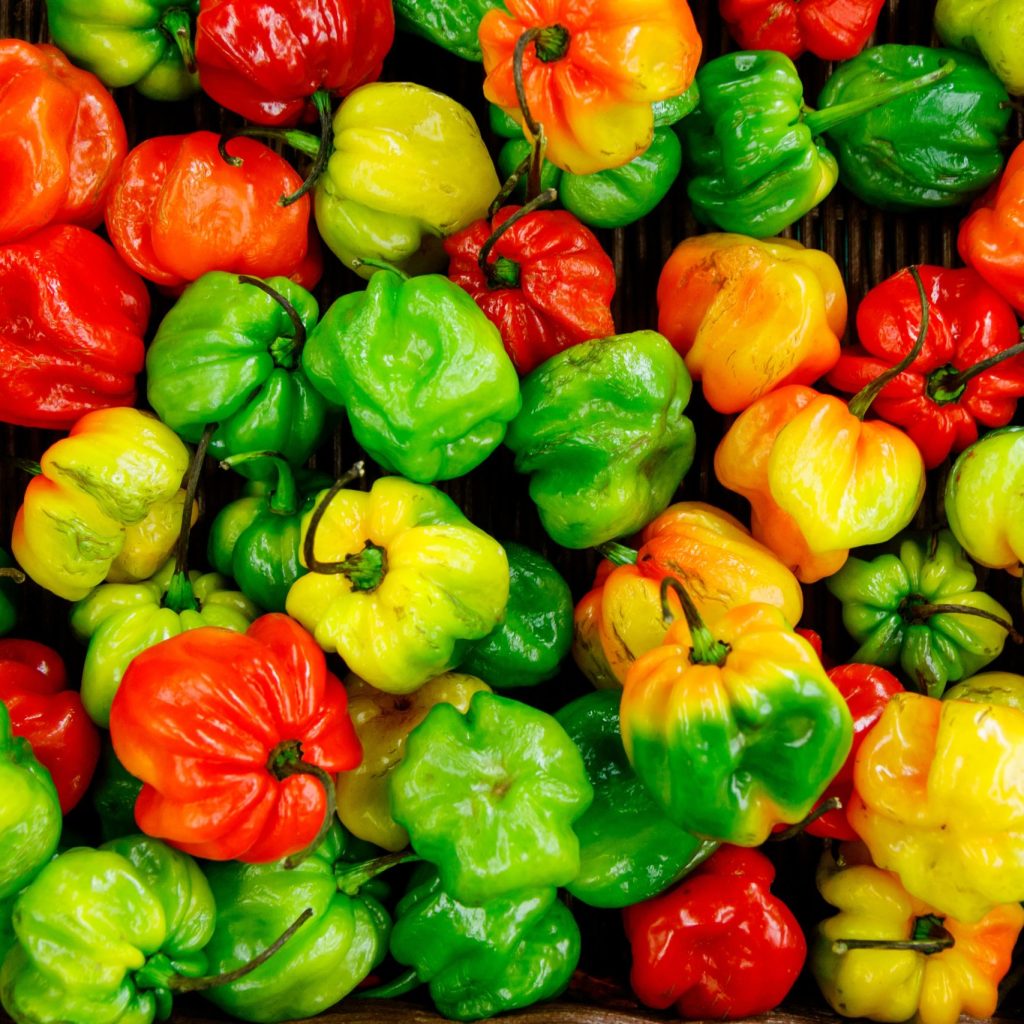Understanding the Background of Bird’s Eye Chilli
Origins of Bird’s Eye Chilli
The Bird’s Eye Chilli, scientifically known as Capsicum frutescens, is a small and fiery pepper that holds a remarkable place in the realm of culinary excellence. This hot chilli variety traces its origins back to various regions around the globe, including Southeast Asia, Africa, and the Americas. It is believed to have first originated in the Amazon Basin and later spread to other parts of the world through trade and exploration.
Characteristics of Bird’s Eye Chilli
What sets the Bird’s Eye Chilli apart from other types of peppers is its compact size and vibrant red or green color. The peppers are typically just an inch or two long, resembling small bird’s eyes, hence the name. However, don’t let their diminutive appearance deceive you, as these tiny powerhouses pack an intense punch of spiciness. Ranging between 50,000 to 100,000 Scoville Heat Units (SHU), Bird’s Eye Chilli ranks high on the heat scale, making it a favorite among spice enthusiasts.
Culinary and Medicinal Uses
For centuries, Bird’s Eye Chilli has been an integral part of traditional cuisines in many cultures. Its potent heat and unique flavor profile have made it a popular ingredient in various spicy dishes, sauces, marinades, and condiments. From Thai and Indian curries to African stews, this fiery chilli adds an unmistakable zing to countless recipes, igniting taste buds and bringing dishes to life.
Beyond its culinary applications, Bird’s Eye Chilli also possesses several medicinal properties. Due to its active compound called capsaicin, it is often used as a natural pain reliever, anti-inflammatory agent, and even as a potential weight-loss aid. The fiery heat of the chilli is known to stimulate endorphin production, providing a sense of euphoria and boosting metabolism.
Cultivation and Harvesting Techniques for Bird’s Eye Chilli
Soil Preparation and Planting
To cultivate Bird’s Eye Chilli successfully, proper soil preparation is crucial. This fiery little pepper thrives in well-drained soil with a pH level between 6.0 and 7.0. Before planting, it’s recommended to amend the soil with organic matter such as compost or well-rotted manure to enhance nutrient availability.
When it comes to planting, Bird’s Eye Chilli seeds should be sown indoors approximately 8-10 weeks before the last expected frost. The seeds are tiny, so shallowly sow them on the surface of seed-starting mix and lightly cover them. Maintain a consistent temperature of around 25-30°C (77-86°F) and ensure good moisture levels. Once the seedlings have developed several true leaves, they can be transplanted into larger containers or directly into prepared garden beds.
Providing Optimal Growing Conditions
Bird’s Eye Chilli plants require at least 6-8 hours of sunlight daily for optimal growth and fruit production. They prefer warm climates and should be protected from strong winds, as their delicate branches may break easily. Regular watering is essential, especially during dry periods, but it’s important to avoid overwatering, as this can lead to root rot.
Supporting the plants with stakes or cages is recommended, as they tend to grow upright but can become top-heavy due to the abundance of fruits. Pruning the plants can help maintain a compact shape and improve air circulation, reducing the risk of fungal diseases. Additionally, applying organic mulch around the base of the plants helps retain moisture, suppress weeds, and regulate soil temperature.
Pest and Disease Management
While Bird’s Eye Chilli plants are generally resistant to pests and diseases, some common issues can still arise. Aphids, mites, and whiteflies can occasionally infest the plants, sucking sap and causing damage. These pests can be controlled by spraying a mixture of neem oil and water or by introducing beneficial insects like ladybugs or lacewings.
Fungal diseases like powdery mildew or root rot can occur if the plants are exposed to excessive moisture or poor air circulation. To prevent such diseases, avoid overcrowding plants and allow space between them for adequate airflow. Applying a copper-based fungicide or a mixture of baking soda and water can help control fungal infections if they do arise.
By following these cultivation and harvesting techniques, you can successfully grow Bird’s Eye Chilli plants and enjoy an abundance of these fiery little wonders in your garden. Remember, organic methods not only promote healthier plants but also contribute to the overall sustainability of our environment.
Nutritional Profile and Health Benefits of Bird’s Eye Chilli
Nutritional Value of Bird’s Eye Chilli
When it comes to nutritional content, Bird’s Eye Chilli is a small yet mighty powerhouse. Packed with essential vitamins and minerals, this fiery spice adds more than just heat to your meals. It contains high levels of vitamin C, which boosts the immune system and promotes healthy skin. Additionally, it is a good source of vitamin A, known for its role in maintaining eye health. Bird’s Eye Chilli also contains significant amounts of potassium, which helps regulate blood pressure and supports heart health.
Health Benefits of Bird’s Eye Chilli
Beyond its nutritional value, Bird’s Eye Chilli offers numerous health benefits. The compound responsible for its spicy kick, called capsaicin, has been found to have antioxidant and anti-inflammatory properties. These properties may aid in reducing inflammation, boosting metabolism, and promoting weight loss. Capsaicin has also been linked to pain relief and improved digestion. Moreover, studies suggest that consuming Bird’s Eye Chilli may have a positive impact on cardiovascular health by improving blood circulation and reducing the risk of blood clots.
Cautionary Notes
While Bird’s Eye Chilli has a plethora of benefits, it is important to consume it in moderation. Its intense heat can cause discomfort and irritation, especially for those with sensitive stomachs or digestive issues. Some individuals may also experience allergic reactions to chili peppers. It is advisable to start with small quantities and gradually increase the levels of spice in your diet. Remember, a little goes a long way with Bird’s Eye Chilli, so use it judiciously to savor its flavors and reap its health rewards.
Culinary Uses of Bird’s Eye Chilli in Global Cuisine
Enhancing Spiciness in Asian Cuisine
Bird’s Eye Chilli, with its fiery heat and distinct flavor, is a staple ingredient in many Asian cuisines. From Thai curries to Indonesian sambals, this small but mighty chilli packs a punch and adds a delightful spiciness to dishes. Chefs and home cooks alike appreciate its ability to intensify the flavors of stir-fries, soups, and sauces, creating a truly memorable dining experience.
Elevating Heat in Latin American Dishes
Across Latin America, Bird’s Eye Chilli is treasured for its vibrant spiciness and versatility in various traditional dishes. In Mexican cuisine, it is commonly used in salsas, guacamole, and marinades, offering a fiery kick and enhancing the overall flavor profile. In Brazilian cuisine, it finds its way into feijoada, a hearty black bean stew, adding a touch of heat that balances well with other ingredients. Its presence in Latin American culinary traditions brings excitement and depth to every bite.
Adding Zest to Global Fusion Cuisine
With the rise of fusion cuisine and the ever-growing popularity of experimenting with different flavors, Bird’s Eye Chilli has found its way into global culinary creations. From spicy pasta dishes to hot sauces, this chili variety adds a dynamic element to dishes from various regions around the world. Its complex spiciness complements both savory and sweet dishes, surprising and delighting adventurous palates. Whether incorporated into a spicy hummus or infused into a decadent chocolate dessert, Bird’s Eye Chilli proves that it can take any dish to new, exciting heights.
Growing Bird’s Eye Chilli at Home: A Comprehensive Guide
Choosing the Right Variety
When it comes to growing bird’s eye chilli at home, selecting the right variety is key. There are several different types of bird’s eye chillies available, each with their own unique characteristics. Some varieties may be more suitable for your climate or gardening conditions, so it’s important to do some research before making a decision.
Preparing the Soil
Before planting your bird’s eye chilli seeds or seedlings, it’s crucial to prepare the soil properly. These plants thrive in well-draining soil that is rich in organic matter. You can enhance the soil quality by adding compost or well-rotted manure to provide essential nutrients. Additionally, ensuring the soil pH is slightly acidic, between 5.5 and 6.5, will promote healthy growth.
Caring for Your Chilli Plants
Once your bird’s eye chilli plants start growing, they require regular care to ensure optimal development. Proper watering is crucial; these plants like moist, but not waterlogged, soil. It’s best to water them deeply and allow the soil to dry out slightly before watering again. Adding a layer of mulch around the plants can help retain moisture and reduce weed growth.
Fertilizing your chilli plants every couple of weeks with a balanced fertilizer can further promote growth and fruit production. Be careful not to over-fertilize, as this can lead to excessive foliage growth but fewer chillies.
Pruning your bird’s eye chilli plants is another important aspect of care. Regularly removing dead or damaged leaves, as well as trimming back excessive growth, helps maintain plant health and prevents diseases from spreading.
Protecting your chilli plants from pests and diseases is crucial. Inspect your plants regularly for any signs of infestation or infection, and take appropriate measures such as using organic insecticides or fungicides to control the issue.
By following these guidelines and providing adequate care, you can enjoy a successful and bountiful harvest of bird’s eye chillies right from your own garden!


